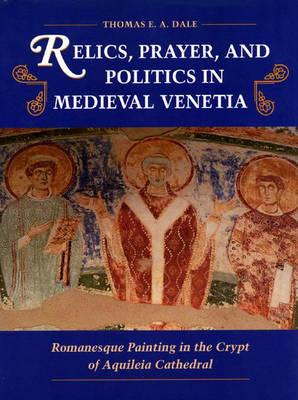Against a historical backdrop of relic theft and propaganda campaigns waged by two cities vying for patriarchal authority in medieval Venetia, Thomas Dale shows how Romanesque mural painting shaped sacred space and institutional identity. His focus is on the late twelfth-century murals in the crypt of Aquileia Cathedral. The crypt, which contains the relics of Aquileia's founding bishop, Saint Hermagoras, has a historical significance rooted in a legend identifying the saint as a direct disciple of Saint Mark the Evangelist. On this basis, the Carolingians promoted the city's status as patriarchal see of Venetia - a claim that prompted Venice to steal Mark's relics from Alexandria, Egypt, and appropriate Aquileia's history. This book, the first English-language study of the crypt, explores how the paintings complement the relics of Hermagoras in their distinct devotional and political roles. Hermagoras' intercessory power is activated by his orant image displayed over the central aisle within a larger hierarchy of apostles, martyrs, and bishops.
The surrounding hagiographic cycle justifies in legalistic fashion Aquileia's patriarchal title and the consecration of the city as locus sanctus of Venetia by the blood of its martyrs. The iconic images in the eastern lunettes present the Virgin's compassio as a pictorial model for the vicarious experience of Christ's Passion. Finally, a fictive curtain over the socle presents allegories of spiritual warfare in the form of exempla from crusades, pilgrimage, and the epic poem "Psychomachia", which Dale analyzes as a gloss on the main program.
- ISBN10 0691011753
- ISBN13 9780691011752
- Publish Date 16 November 1997
- Publish Status Out of Print
- Out of Print 17 March 2015
- Publish Country US
- Imprint Princeton University Press
- Format Hardcover
- Pages 282
- Language English
- URL https://press.princeton.edu/titles/6190.html
